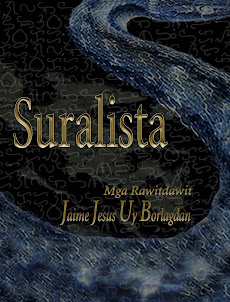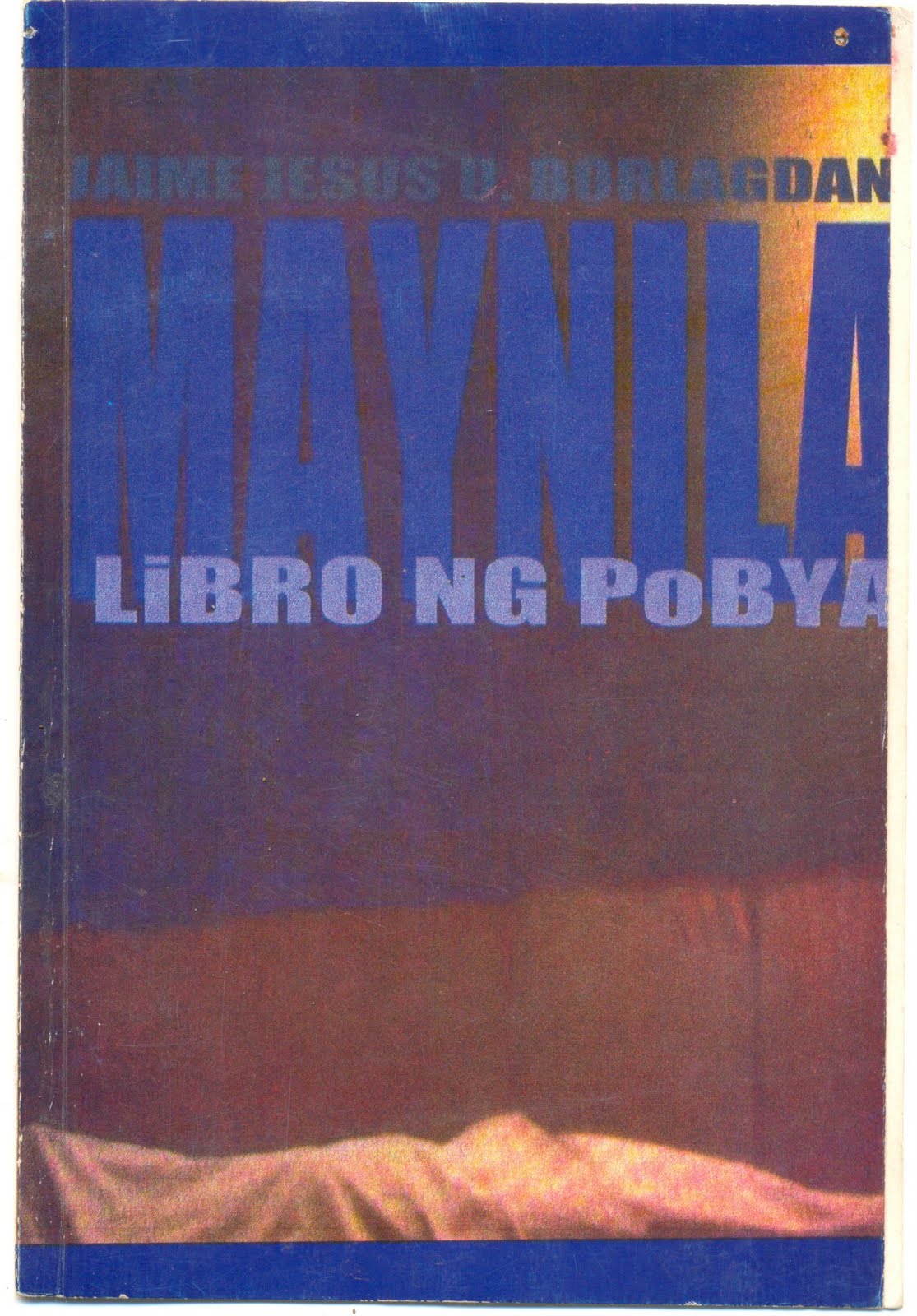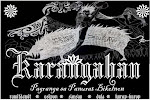
Sain hali an diklom kan kahewasan?
Sa kawaran ki liwanag buda lawas
An buta kong kalag nakamaan duman.
Liwanag sa diklom, ihurma an bulan
Malipot na rarom an púro iluwas
Digdi hali an diklom kan kahewasan?
Sa isla kan itom mong alinawnawan
Mamundo sa tahaw kan dagat na gatas
An paha kong kalag minahigop duman.
Sa dungo mong duwang kuwebang istaran
Kan ermitanyong parong, hangos na halas
Minakamang an diklom kan kahewasan.
An ngirit kan yukyok mo an inarugan
Kan palatawan kaining planetang layas
An gadan kong kalag minaladop duman.
Digdi sa hapot ika an kasimbagan
Sa simbag iyo man an walat na ngalas
Simo hali an diklom kan kahewasan
Ilabto ko an bilog kong kalag duman.
Abril 2, 2007. Karanggahan.
Translation:
Where is the source of the darkness of space?
In the abscence of light and form
my blind soul is looking there.
Light in the dark, molds the moon
warmthless depth producing the pure
is this the source of the darkness of space?
In the black isle of your pupil
sorrowful in the midst of a sea of milk
my thirsty soul drinks from there.
From your nose which are pair of caves home
to an hermit scent, snake of breathing
crawls the darkness of space.
The smile of your armpits are imitated
by the water where these wild planets float
my dead soul dives there.
To this question you are the answer
in the answer you are the awe which is left
The darkness of space comes from you
I dip my entire soul there.
Villanelle I
Radhana II

Pag-ipurupot niya an halipot niyang kugos sakuya
mga enot niyang pagpahiling ki pagkamoot o pag-uli
ki pagkamoot, irasay an sadiri sa pagtubod na padaba ko siya
sasalohon ko siya, dai ko siya papaduoton sa daga,
garo may sarong bayong
na sa kadlagan haluyon na buhi
an bigla na sanang tuminugdon
sa sakuyang kamot, dawa daing taon
muyang magpalaom.
Abril 11, 2007. Karangahan
Translation:
When she curls her short embrace around me,
her first revelations of love or a way of returning
love, sliding herself with a belief that I love her
I will catch her, I will not let her touch the earth,
there seems to be a bird
which in the forest has been free for a long time
which suddenly perched
on my hand, even without bait,
wanting to be caged.
Labels: poetry , rawitdawit
An litrato mo kan aki ka pa
Garo lingaw na an agang ini
kan sa may gate nilitrato kamo,
ika, pinsan mo, tugang, subrino,
arakion pa, dai pang luha.
Dumingo ini, sa reparo ko.
Ta nakasanli kamong pansimba.
Tibaad magayunon na aga.
Sa saindong tuhod nagkakamang
an nag-aarikarik na sildang.
Nakaulok an duwa mong pinsan
sa wala. Si Maine buda Angela
na garo toodon sa kamera.
Sa tahaw si Bibol buda Potsi
magkakaputan, garo mahibi
sa paghalat sa linti kan lente.
Ika buda si Ramil an balanse
sa too. Nakahiling sa gilid,
dai tood, ining subrino mo
pahungukon. An akbay mo pugol
ngani matapos na ining kua.
Garo napipiritan ka sana.
Apuwera sa duwang nasa wala,
mga kalibangbang kamong layas
na nilaog sa kwadrong salming.
Bako kamo tood na mapundo
an hiro nindong daing hingalo.
Tibaad ginabot sana kamo
mantang nasa kawat ki bukudan.
Muya na nindong dumalagan.
Sa litratong ini nahiling ko
an kapunan kan saimong gayon.
Panuon ki diklom, an mata mo
may apod na garo nambubutong.
An hiling mo magabat sa dakol
na tago buda muyang itaram.
Kun nakapaghalat sana kuta
su sibot na pitik kan kamera,
nadakop kaini su paabot
mong ulok na haluyon mailuwas.
April 14, 2007. Karanggahan.
Radhana I

Kun ipalibutan ninda
garo na siya an tahaw
kun sain nakatindi an lubid kan gabos
na naglalataw sa kahewasan.
Garo dai sindang buhay
kaipuhan nindang humagad saiya.
Kaipuhan nindang mahiling
kun ano an masunod niyang gigibuhon.
Garo gabos na gigibuhon niya
enot na mangyayari.
Pagminakanta siya, an nakadangog saiya
duman pa sana nakadangog ki kanta.
Ano siya pintuan
kun sain an milagro
kan satong pigpangiturugan
minaluwas?
Arog baga kan saiyang mata
na dai pa tatao magtipwas,
garo bako kami an naggibo saiya.
Sain siya hali?
Ta nahigop niya an kolor
hali sa oras na mauli na an aldaw.
Nahihiling ko an kaogmahan
na naglalangoy sa sadit niyang lawas
riraw garo mga salog ki liwanag
nagbubulos pasiring sa dagat
na uulian kan rogado tang kalag.
Pawa. 2006.
Translation:
The way they crowd around her
is like she has become the center
where the strings of everything floating
in the vastness is pegged.
As if they don't have life
they need to beg from her.
They need to see
what she's going to do next.
As if everything she'll ever do
will happen for the first time.
When she sings, those who have listened to her
have just heard a song for the first time.
Is she a door
from which the miracle
of things dreamed
steps out?
For example her eyes
which does not know yet how to avoid.
As if we are not the ones who made her.
Where did she came from?
For she has absorbed the color
of the hours when the sun is going home.
I can see bliss
swimming in her small body
clear like a river of light
flowing to the sea
where our tired souls will return.
An Kasal

Tigsik ko an pagkamoot na daing sukol
kan baybayon buda kan hukol
na dulot kan pandakupan
kan kinaban buda bulan
Kaya kita digdi daing pagbasol
sa inako tang daing kasagkudan
hanggan sa nagbabalik an hukol
hanggan sa nagbibilog an bulan
2007. Pawa.
Translation:
The wedding
I toast a love without measure
between the waves and the shore
which is caused by the pursuit
of the earth and moon
That's why we are here without regret
about the never ending which we had accepted
as long as the waves return
as long as the moon becomes full.







